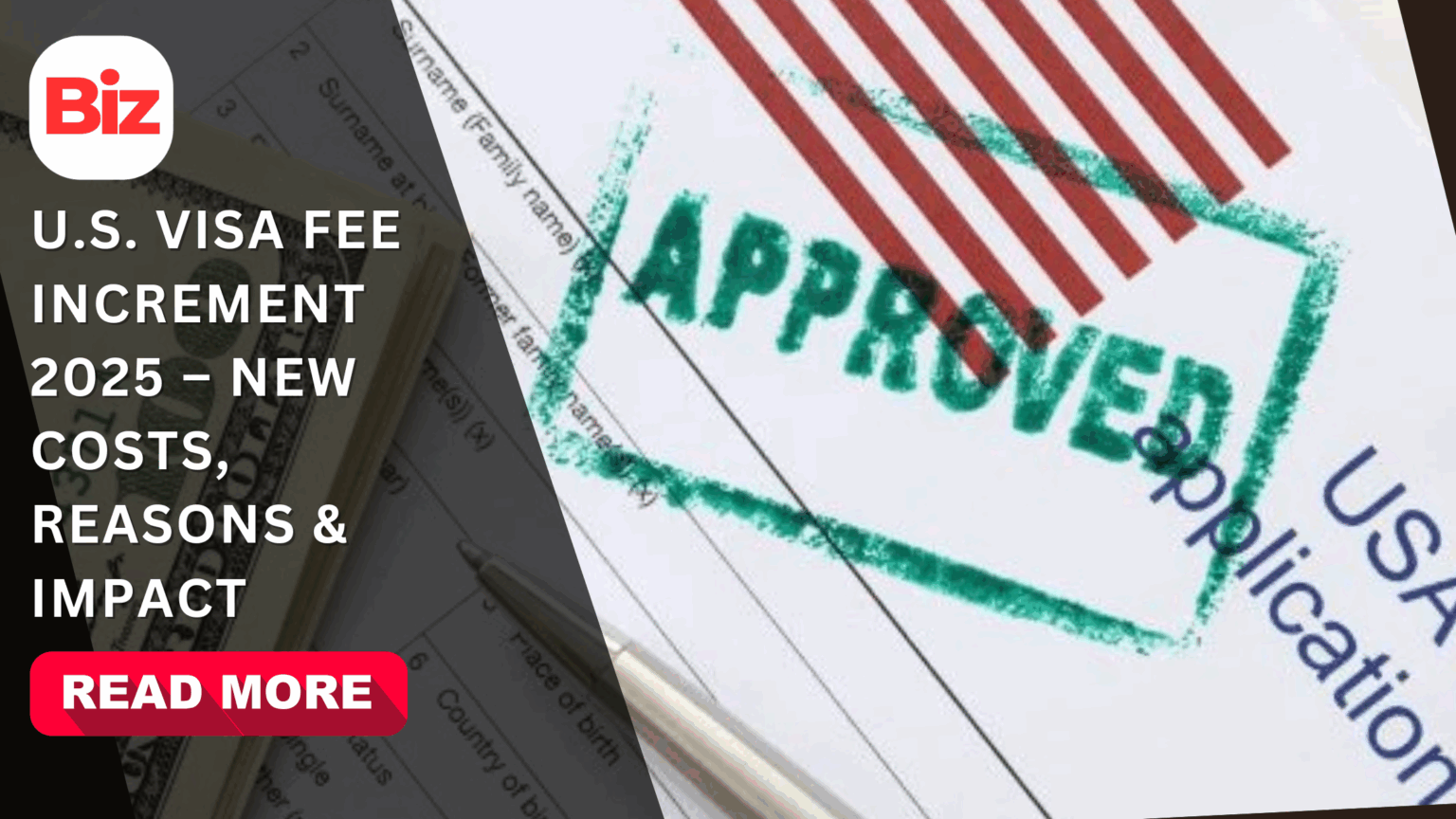As a country, the United States has always been among the most visited countries by international travelers, students, and skilled professionals. Nonetheless, in 2025, the government declared U.S. visa fee increase in a variety of categories. The implementation of such a policy has become a topic of worldwide debate, as it directly affects the millions of applicants that want to study, work, or travel to the U.S.
What is the U.S. Visa Fee Increment?
A visa fee increment is the cost increase in the U.S. visa application processing cost. These are required fees, which cannot be refunded, and an individual is required to pay them whether or not their visa is approved.
Periodically, the U.S. Department of State considers and readjusts the cost of visas to reflect administrative costs, inflation, and security needs. This recent increase is applicable to non-immigrant visas (tourist, student, and work visa) as well as to employment-based petitions.
New U.S. Visa Fee Structure in 2025
Some of the most interesting changes in the fee structure include:
- Tourist Visa/Business Visa (B1/B2): Raised to $185.
- Student Visa (F, M, J): Raised to 185 instead of 160.
- Work Visa (H, L, O, P, Q, R categories): Raised to 205 dollars.
- Investor Visa (E category): Raised 205 to 315.
- Special Visa Applications (waivers, treaty visas, etc.): Variable with complexity.
These modifications might be small enough to not look like much but to families or institutions funding several applicants the expense can quickly add up.
Why did the U.S. raise Visa Fees?
The recent increment is in part due to the following reasons:
Increasing Administrative Costs – Visa processing requires background and interviews and collection of biometric data which are costly processes.
Inflation Adjustments – U.S. periodically bases its visa fee on inflation adjustments to maintain a sustainable financial base.
Increased Security levels – As the world continues to face increasing security challenges, tighter vetting processes come at a higher cost.
Balancing Demand – An increase in fees can serve as a filter to deal with excessive demand to obtain a U.S. visa.
Influence on other Applicants.
- Tourists and Business Travelers.
Regular visitors to the U.S. will experience a significant increase in prices, particularly families that are applying collectively. Although this increase of 25 may not be prohibitive, it will increase the total cost of U.S. trips.
- International Students
To students the increase would have added to the already high cost of attending school in the U.S. Tuition, living expenses, SEVIS fees, and higher visa fees would make financial planning an even more important factor.
- Professional and talented Human Resources.
H-1B and L-1 work visas are already associated with costly application and legal processing fees. Employers and employees might experience the added burden of the recent increases in fees.
- Investors and Entrepreneurs.
Investor visas (E category) increased the most, surging more than $100. This is indicative of an urge by the U.S. government to match the program to its high administrative load.
Applicant tips on how to cope with the fee increase.
The following are some of the strategies that you can use to reduce any effect of the increment in case you are applying to be granted a visa in the United States:
- Apply Early: Complete your application in time before high seasons of travelling or studying when demand is high.
- Plan Your Budget: Include the new charges and other traveling costs, tuition or moving costs.
- Check Exemptions: Diplomats or other exchange visitors may be checked without paying fees.
- Request to be Sponsored by the Employer: Visa fees for expatriate employees are paid by many U.S. based companies.
International responses to the Increment.
There has been a mixed reaction to the U.S visa fee increase:
According to its supporters, the increase is necessary to enhance processing efficiency and security.
Critics think it is an added obstacle to international students and top talent, making the U.S. less competitive in its attracting international talent.
A number of education consultants have cautioned that the move could drive students to other education destinations such as Canada, the U.K. and Australia where visa rates are relatively low.
Conclusion
The increase in the U.S. visa fee in 2025 is an expression of the realities in the global economy, as well as the concerns of the U.S. government with regard to sustainable immigration processing. Though some of these changes are modest, they have a huge effect on the students, families, and businesses who depend on international mobility.
The most important thing that aspiring travelers, workers and students need to do is to plan ahead, keep up to date and budget the extra costs. The U.S. has long been a favorite destination globally, whether through studying, employment, or travel, which explains its popularity despite the increased costs.
FAQs
- Why has the U.S. raised visa charges in 2025?
The U.S Department of state increased the visa charges to offset the cost of administration and inflation and also to increase security. This is so as to make the visa process efficient and financially viable. - In 2025 what is the new U.S. student visa fee?
By 2025, the student visa (F, M, and J types) fee will rise to 185 (instead of 160). SEVIS fee is also required that must be paid by students individually and does not change. - What is the US tourist visa fee post increment?
The B1/B2 (business and tourist) visa charge has risen to 185 dollars per visa holder. - What was the largest increase in visas?
The E-category Investor Visa was the most increased and became 315 more after being 205, because of the complexity of processing and other background checks involved. - Do increases of visa fees apply to applications already submitted?
No. It is not going to affect applicants who already made and submitted their applications prior to the increment. The new fee would only apply to applications made thereafter. - Can U.S. visa application be refunded in case of rejection?
No. Visa charges are not refundable, whether it is approved or not, or withdrawn as well. - Will the U.S. raise their visa fee any further?
The U.S. reconsiders the visa charges after intervals, mostly after several years. Although no fixed timeframe is in place when future increases can occur, it is always recommended that applicants consult the most current official regulations to ensure they do not apply to them.








